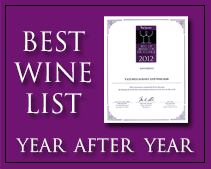About Wines from Nuits-St.-Georges of Burgundy, France Best wine supplier in Philippines discusses wine related topics
December 22, 2010
In this guide’s final visit to the Côte de Nuits we move from Vougeot and its somewhat inauspicious grand cru Clos de Vougeot to the exalted grands crus of Vosne-Romanée; the two are as dissimilar as chalk and cheese. The former is large and bloated, carelessly defined, the wines not infrequently known to disappoint, whereas the latter is a collection of very tiny vineyards, precisely drawn, which in many cases produce highly sought after wines of great quality. One even holds the title of France’s smallest appellation. In addition, Clos de Vougeot is greatly parcellated, with a multitude of proprietors treading the soil here, whereas a number of the Vosne grands crus are monopoles, vineyards in the sole ownership of a single vigneron or other proprietor. The system is not perfect, however, for not all of the Vosne-Romanée grands crus should be considered above appropriate criticism, as I explain below in my account of the Vosne vineyards. Those of Flagey-Echézeaux, the vinous orphans nestled between the vineyards of Vosne-Romanée and the stone walls of the Clos de Vougeot, are also included here. We finish up, quite fittingly perhaps, with the commune that gives its name to this section of the Côte d’Or, Nuits-St-Georges.
Vosne-Romanée & Flagey-Echézeaux
Of all the communes of the Côte de Nuits, regardless of how lyrically I may have waxed about the king that is Gevrey-Chambertin, or the queen that is Chambolle-Musigny, no lover of Burgundy can do without Vosne-Romanée. So how can we extend these regal metaphors to cover this village? Emperor, perhaps? Whatever title we may choose, there is certainly a majesty about the wines of Vosne-Romanée, much of it engendered by the commune’s fine collection of grands crus, most notably La Tâche and La Romanée, both exploited by the equally fabled Domaine de la Romanée-Conti – DRC to friends.
The village of Vosne has its origins in the 6th century or perhaps even earlier, the name evolving from the original Vaona, mutating by a number of steps into the Vosne we have today. As usual there was a significant religious presence within the commune, in this case the Prieuré de St-Vivant, although the Abbaye de Citeaux and other ecclesiastical institutions also owned vineyards. Many of the grands crus owe their names to these early owners, St-Vivant being an obvious example (for Romanée-St–Vivant) but other proprietors included the Prince de Conti (for Romanée-Conti). Naturally, with the Revolution these men of the cloth and noblemen lost control of their vineyards and they were subsequently auctioned off. Thereafter the usual process of micro-division began, although some reconstitution before the appellation laws were drawn up in the early 20th century meant that at least some of the grand cru sites are of meaningful size. On the other hand, amongst the grands crus of Vosne-Romanée we also have some of the smallest appellations in all France.
A curious anomaly associated with Vosne is the commune of Flagey and her two grand cru vineyards, Echézeaux and Grands-Echézeaux. Flagey itself is a small village which lies a little way from the slopes of the Côte d’Or, down on the plain beyond not just the RN74 but on the other side of the railway. In an honest assessment of the distance it is not really that far, but from a viticultural viewpoint it could be a whole world away. Perhaps reflecting this, the commune’s small number of premier cru and village vineyards are bottled and sold under the name of Vosne-Romanée rather than Flagey-Echézeaux. For this reason it is commonplace to deal with the two communes in tandem.
Vosne-Romanée & Flagey-Echézeaux: Vineyards
Beginning with the grands crus, and those of Flagey first, these vineyards lie on the slope above the questionably qualified Clos de Vougeot. The larger at 37.7 hectares is Echézeaux, one of the largest grands crus of the whole Côte d’Or in fact. Divided into a number of climats the vineyard sprawls around the famous clos and its smaller (despite the name perhaps suggesting otherwise) companion, Grands-Echézeaux. Naturally within such a large site the terroir varies considerably, and thus the climat of origin may have considerable importance in determining the style and quality of the wine. Sadly this information does not always appear on the label (especially if the wine is blended from several climats), but a number of producers do make clear the location of their vines, so it is worth noting which sections of the vineyard have the best reputation. Generalising, those lower down the slope have more clay and yield richer wines, whereas those higher up have more sandy soils, and what results is more elegant. The difference is not as marked as in Clos de Vougeot, as at least here the vines do not run all the way down to the road, but there is certainly a climat-effect. Two worth noting perhaps more than others include Echézeaux-du-Dessus and Les Poulaillières; both lie just above Grands-Echézeaux, and the latter counts the Domaine de la Romanée-Conti amongst its proprietors.
Perhaps more reliable are the wines of Grands-Echézeaux (9.1 hectares), a curiously shaped vineyard which squares off one corner of the Clos de Vougeot, sandwiched between this famous vineyard and the Echézeaux climats. I have coloured it a little paler on my map (below) to differentiate more clearly between this vineyard and Echézeaux. Once the property of the Citeaux abbey this site, dominated by shallow clay and chalk, enjoys a somewhat superior reputation when compared with any of its Echézeaux or Vougeot neighbours, although visually it is hard to see why. It may have as much to do with the dedication of the proprietors, again including the Domaine de la Romanée-Conti. Whatever the reason the wines are better and therefore the prices are higher; nevertheless the step up in quality can make this expenditure worthwhile.
Burgundy wine guideAs for the grands crus of Vosne itself, these number six on total, and include perhaps some of Burgundy’s most evocative names. It is difficult to know where to begin here, as almost all of these vineyards enjoy a spotless reputation and they each have their dedicated band of followers. Head of this cohort is undoubtedly Romanée-Conti, at 1.8 hectares a vineyard of minuscule size. Like all the grands crus this site lies on the slope directly to the west above the village of Vosne, and it is one of a pair of these exalted sites that is owned in entirety by the Domaine de la Romanée-Conti. Originally known simply as La Romanée (confusingly the same name as the adjacent vineyard) the site came into the ownership of François de Bourbon, the Prince de Conti, in 1760. In a sale seemingly arbitrated by France’s regent himself, a distant relation of the prince, François paid a high price and he rewarded himself by stamping his authority on the vineyard by appending his name. It remains Romanée-Conti to this day; the wines are highly regarded, perfectly composed, desirable and naturally therefore they can fetch high prices. Unusually for Burgundy, they have also become an investment vehicle, with bottles and cases lingering on the after-market for decades. Those who can not afford a bottle (and that is most of us) must perhaps make do with a photograph of themselves beneath the cross (shown below) which sits at the foot of the vineyard; a site of pilgrimage for Burgundy-lovers, it is perhaps the most photographed vineyard ornament in the whole region.
Burgundy wine guideAlthough DRC’s other monopole La Tâche might seem the obvious candidate to be next under the microscope, just above Romanée-Conti is La Romanée, the smallest appellation in Burgundy and indeed all France (at less than 0.9 hectares), and this is the next vineyard in my journey through Vosne. Only a path separates the two sites, and in considering Romanée-Conti’s change of name it would seem reasonable to assume the two were once part of the same vineyard. Writing in Côte d’Or (University of California Press, 1997), Clive Coates nevertheless argues that this was not the case, La Romanée and Romanée-Conti having had quite different owners across the centuries. Visually the two can be differentiated by the orientation of the vines, those in Romanée-Conti running up the slope, whereas in Romanée they run along the slope. In the sole ownership of the Ligier-Belair family, for many years the wines have been marketed by Bouchard Père et Fils, but the owners have in recent vintages undertaken this themselves. Although perhaps not quite as highly regarded as the wines of Romanée-Conti, to point out such differences does feel like splitting hairs. The wines can be excellent.
The Romanée and Romanée-Conti duo lie at the heart of the Vosne grands crus, which lie clustered on the slopes to the west of the village. Lying between this pair and creeping north and east around Vosne itself is Romanée-St-Vivant (9.4 hectares), named for the abbey that once owned this land. There are a number of owners but they include once again Domaine de la Romanée-Conti. The soils are limestone higher up the slope, with more clay at the bottom near the village, and the style is said to be somewhat lighter than some other Vosne grands crus, but nevertheless of very high quality. To the south of these three vineyards lies the aforementioned La Tâche, a 6 hectare vineyard the name of which translates literally as “task”, perhaps relating to the work involved in tending the vines. As mentioned above, this is another DRC monopole, and it is divided up into two climats, La Tâche and La Tâche-Gaudichots. These were united following an application to do so in 1932 from the owners, the only opposition coming from the aforementioned Ligier-Belair family who owned some vines in the smaller of the two; they lost the case, and subsequently sold their vines to the victors. The wine is again highly regarded, consistent and rich.
Sandwiched between La Tâche and the three aforementioned vineyards is La Grande Rue (1.7 hectares), a curious site because – despite its exalted position interposed between these other grands crus – it was only elevated to the position of grand cru itself as recently as 1992. The responsibility for this failure to correctly classify this site would appear to lie with the Lamarche family, proprietors in the early 20th century when the rankings were determined, to press for the site’s recognition as a grand cru. Today the vineyard remains a monopole in the hands of the same family, and there are some who would argue that the promotion was not merited by the quality of their wines. La Tâche and Grande Rue are shown in the image below, taken from the road at the bottom of La Romanée-Conti as indicated by the viewpoint on the map above. In the foreground are La Romanée-Conti and La Romanée, whereas further up and along the slope are the premier cru Aux Reignots and the villages-level lieu-dit Aux Champs Perdrix. Rolling your mouse cursor over the image will show which is which.
Burgundy wine guide
The final member of the Vosne sextet is Richebourg, not quite the largest grand cru at just a little over 8 hectares, but certainly one of the most significant, especially for those looking for a taste of what Vosne-Romanée can offer without having to go to the Domaine de la Romanée-Conti (who own a portion of this vineyard, but so do a number of other highly reputable growers). The vineyard lies just to the north of the Romanée/Romanée-Conti pair, and is separated from the village by the aforementioned Romanée-St-Vivant. The origins of the vineyard lie with the abbey at Citeaux, but following the Revolution it came to be in the joint possession of a number of proprietors. Today that situation persists, and although those with sufficient funds may sample this vineyard’s delights as conceived by the Domaine de la Romanée-Conti, as indicated above there are a number of other names that make wines which give a similarly fine experience. Nevertheless, despite the size of the vineyard the bottles can still be difficult to track down, and naturally they still command a significant premium!
With so may fine grand cru sites it should come as no surprise that there are a number of excellent premier cru vineyards here and Aux Malconsorts (5.9 hectares), a vineyard which abuts La Tâche and to which I alluded in my introduction, is just one of the better sites. There are some who would support its elevation to grand cru status. Other notable vineyards include Les Suchots, a large vineyard (13 hectares) which lies between the grands crus of Romanée-St-Vivant to the south and Echézeaux to the north; its extensive nature means that it may well serve as an introduction to Vosne premier cru for many. And below the village, beneath the Echézeaux vineyards and the grand and premier cru sites of Vosne are the village vineyards, running along the village-side of the RN74. Altogether there are about 238 hectares, including the Echézeaux vineyards, all of which is committed to red.
Nuits-St-Georges
It is perhaps curious that the town which gave its name to the greatest Pinot Noir region on earth, the Côte de Nuits, the largest of all settlements on this section of the Côte d’Or, itself has no grands crus.
Burgundy wine guideThere are those who would like to see this anomaly – as they see it – rectified. The foremost candidate would be Les St-Georges, the southernmost premier cru, and indeed there is a movement from within the commune, seemingly led by Thibault Ligier-Belair, to have the vineyard elevated in rank. The process is certainly not going to be a quick one, and I would imagine it is unlikely to be straightforward or to go unopposed. Although Les-St-Georges and many of the other Nuits vineyards have a fine reputation they tend to have more clay than is found in communes further north along the Côte d’Or; as a result they yield a style with greater richness than these more northerly communes, albeit a style perhaps with less extreme finesse. This is what holds them back from ascending to the grand cru rung of the ladder, and so the saga of elevation is one we will be able to watch unfold over many years, I think.
Although there is evidence of Roman settlement in the region, the town of Nuits-St-Georges (seen above, looking down onto the rooftops from the vineyards to the south) itself is probably of medieval origin. Once a fortified border-town between France and the fiefdom of the Burgundy dukes, today it is a lively industrial settlement which dwarfs the sleepy villages to the north, and it is home to many cellars, coopers, warehouses and the offices of several négociants. I think the name to be quite majestic, conjuring up for me images of the dragon-slaying knight St George, although that thought reflects only the workings of my own mind and is not intended to suggest that is the origin of the name. Indeed, the origin of Nuits – for as with the other Côte de Nuits villages the ‘St-Georges’ was appended relatively recently – is quite unclear. Writing in the aforementioned Côte d’Or Clive Coates suggests it is a mutation derived from un win, the name for a stream within a valley, perhaps the Meuzin which flows here. Or perhaps it reflects the presence of the many hazelnut and walnut trees high above the village. The answer will forever remain a mystery I suspect.
Source: http://www.thewinedoctor.com/regionalguides/burgundypart10.shtml
Are these articles useful for enhancing your wine and dine experience in the Philippines. Do they also help you with travel, leisure, vacation, dining out, nightlife and other leisure activities plans in Manila and other major cities of Philippines? Yats Restaurant hopes to provide you with ample information so you can plan your trips to Pampanga Angeles City Clark Freeport Zone whether you are travelling from Manila or other Asian countries such as Hong Kong, Shanghai, Singapore, Malaysia or Korea.
Restaurant reservations in Manila Philippines, planning of menu, selection of wine for dinner and booking a private function and event in Angeles City Clark Freeport Zone can all be handled. Yats Restaurant and Wine Bar has been regarded by many to be the premier restaurant north of Manila Philippines. Its 3000-line award-winning restaurant wine list has kept many wine lovers happy dining in this restaurant in Angeles City Clark Philippines for over a decade.
Yats Restaurant and Wine Bar was built by Hong Kong-based Yats International in 2000 to provide a world-class cozy fine dining restaurant, business meeting facilities and venues for private dinners and functions in Pampanga Angeles City Clark Freeport Zone. Pampanga Angeles City Clark Philippines was selected for this restaurant because of safety, clean air, absence of traffic and proximity to Manila and Subic.
For comments, inquiries and reservations, email Restaurant@Yats-International.com or call these numbers:
(045) 599-5600 0922-870-5178 0917-520-4401
Http://www.YatsRestaurant.com
Getting to this fine dining restaurant of Angeles City Clark Freeport Zone Pampanga Philippines
How to get to this fine-dining restaurant in Clark Philippines? Once you get to Clark Freeport, go straight until you hit Mimosa. After you enter Mimosa, stay on the left on Mimosa Drive, go past the Holiday Inn and Yats Restaurant (green top, independent 1-storey structure) is on your left. Just past the Yats Restaurant is the London Pub.
Yats Restaurant and Wine Lounge is the only find dining restaurant to be placed on the list of good restaurants in Angeles City. Generally lauded by Manila food and wine lovers for its award winning restaurant wine list as well as the good ambience of the restaurant, this popular resto bar in Clark is frequently used for group dinners in Pampanga. Many people want to train here in this famous restaurant to become a wine sommelier in the Philippines.











